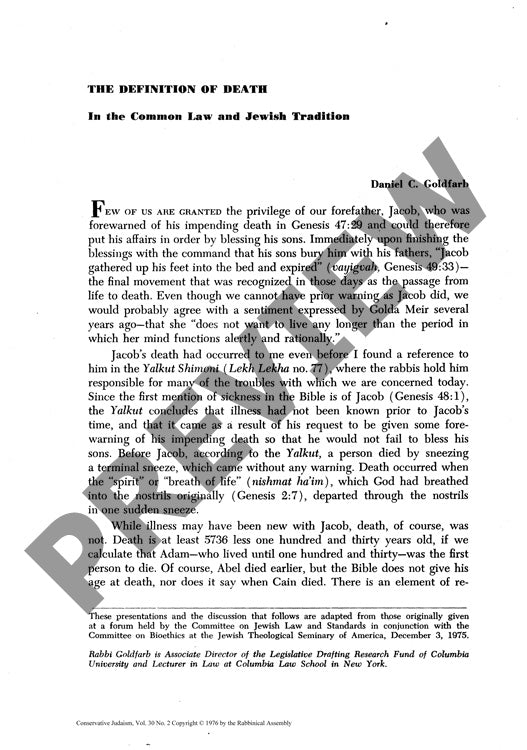The Definition of Death in the Common La
Couldn't load pickup availability
The ancient question of how to legally define death has gained urgent new complexity in an era of mechanical ventilators and artificial heart-lung machines. While both common law and Jewish legal tradition historically relied on cessation of breathing and pulse to determine death, modern medical technology now sustains these functions artificially, demanding reformed legal frameworks. Through comparative analysis of traditional legal sources—including Black's Law Dictionary, Talmudic texts like Yoma 85a, and rabbinic authorities—alongside statutory developments across ten states since 1970, this research examines three emerging legislative approaches: the Kansas alternative definition model, the California additive approach, and the Capron-Kass unified framework. The analysis reveals that Jewish sources demonstrate notable flexibility by acknowledging traditional death criteria may be inadequate in certain circumstances. Modern life-support capabilities have created legal uncertainties in criminal cases, organ transplantation, and treatment of comatose patients, necessitating legislative reform. Brain function criteria can be legitimately incorporated into death definitions when traditional respiratory and cardiac measures are rendered inapplicable by artificial support devices. The findings support adopting unified statutory definitions that include brain function cessation as a backup criterion rather than an alternative definition, while maintaining separation between death determination and decisions regarding withdrawal of life support. Jewish law's balanced approach—prohibiting actions that hasten death while forbidding unnatural prolongation of dying—offers valuable guidance for addressing contemporary medical-legal challenges.

More Information
-
Physical Description
-
Publication Information
Published 1976
ISBN
-
Publication Credits
Daniel Goldfarb

